Tokyo is the capital of Japan and is officially known as the “Tokyo Metropolis,” and what a metropolitan area this city has!
The Greater Tokyo Area has over 37 million inhabitants making it the most populous metro in the world.
This means that the city has come a long way since it was referred to as “Edo,” a small fishing village that was fortified by the Edo Clan in the late 12th century.
It wasn’t until Emperor Meiji moved here in the year 1869 that the city was renamed “Tokyo” which translates to “Eastern capital.”
Despite natural calamities and World War II, events that flattened many parts of the city, it continued booming, something that has resulted in countless amazing buildings being constructed.
Let’s take a closer look at some of the most famous buildings in Tokyo, feats of architecture that you definitely must see when you visit the biggest city in the world!
1. Tokyo Tower
The Tokyo Tower is one of the most distinctive of all famous buildings in Tokyo.
That’s because it both resembles one of the most famous towers in the world, the Eiffel Tower in Paris, and its color scheme of international orange and white
These colors were in line with the safety regulations during the time of construction in the 1950s.

The tower stands 333 meters (1,093 feet) and is one of the best places to get an amazing view of the city.
Official website: Tokyo Tower

2. Tokyo Skytree
The Tokyo Skytree is the tallest structure in Japan and completely dwarfed the Tokyo Tower in height.
This astounding observation and communications tower stand 634 meters (2,080 feet) tall.
This dazzling height makes it the second-tallest structure in the world behind Burj Khalifa in Dubai (829.8 meters / 2,722 feet).
The tower was opened to the public in 2012 and has become one of the most popular tourist attractions in the city, and we really don’t have to explain why!
Official website: Tokyo SkyTree

3. Tokyo Imperial Palace
The Tokyo Imperial Palace is the main residence of the Emperor of Japan.
It’s situated inside a landscaped garden in central Tokyo which covers a total area of 1.15 square kilometers (0.44 square miles) and which features numerous buildings.
The main structure is the residence of the Emperor himself but it also features several residences of the Imperial family, administrative offices, an archive, and a museum.
This amazing palace complex features some of the most famous buildings in Tokyo and it’s right located right in the heart of the city.
Official website: The Imperial Palace
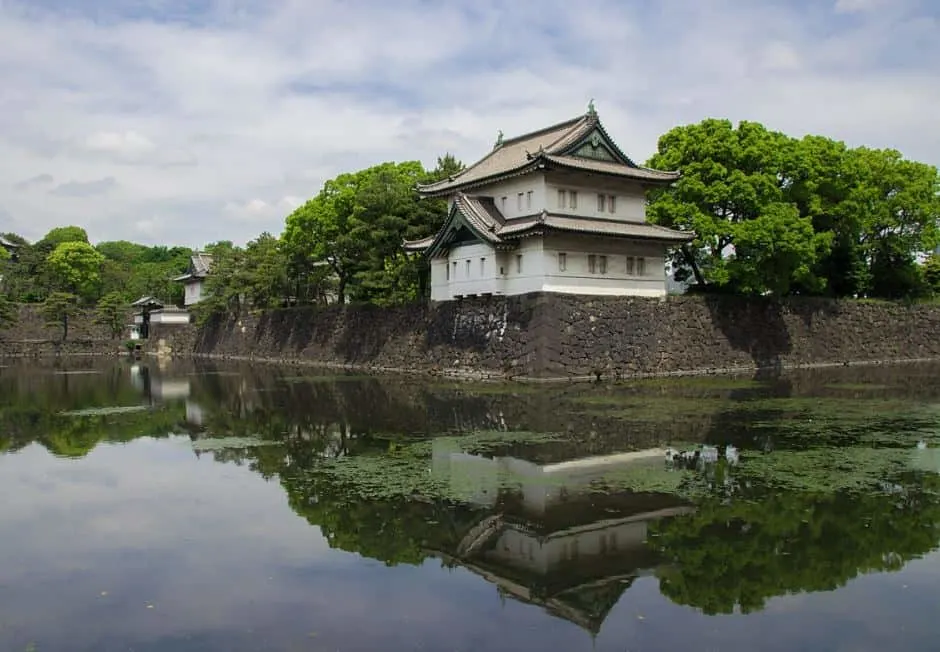
4. Sensoji Temple
The Sensō-Ji Temple is the oldest in Tokyo and one of the most important ones as well.
The original temple dates back to the year 645 A.D. and this building was destroyed during the bombing of Tokyo during World War II.
The temple was completely rebuilt and became independent as well.
It’s adjoined by a five-story pagoda and has become the ultimate symbol of rebirth and peace for the Japanese people.
Official website: Sensoji Temple

5. Rainbow Bridge
The Rainbow Bridge is without a doubt the most famous bridge in Tokyo and arguably one of the most famous bridges in Japan as well.
It’s a suspension bridge that crosses the northern part of Tokyo Bay and which connects the Shibaura Pier and the Odaiba waterfront development in Minato.
The bridge is completely white during the day to resemble the Tokyo skyline, and LED lights are charged during the day
These switch on at night and produce a remarkable visual spectacle at night, a must-see attraction during your stay in Tokyo.
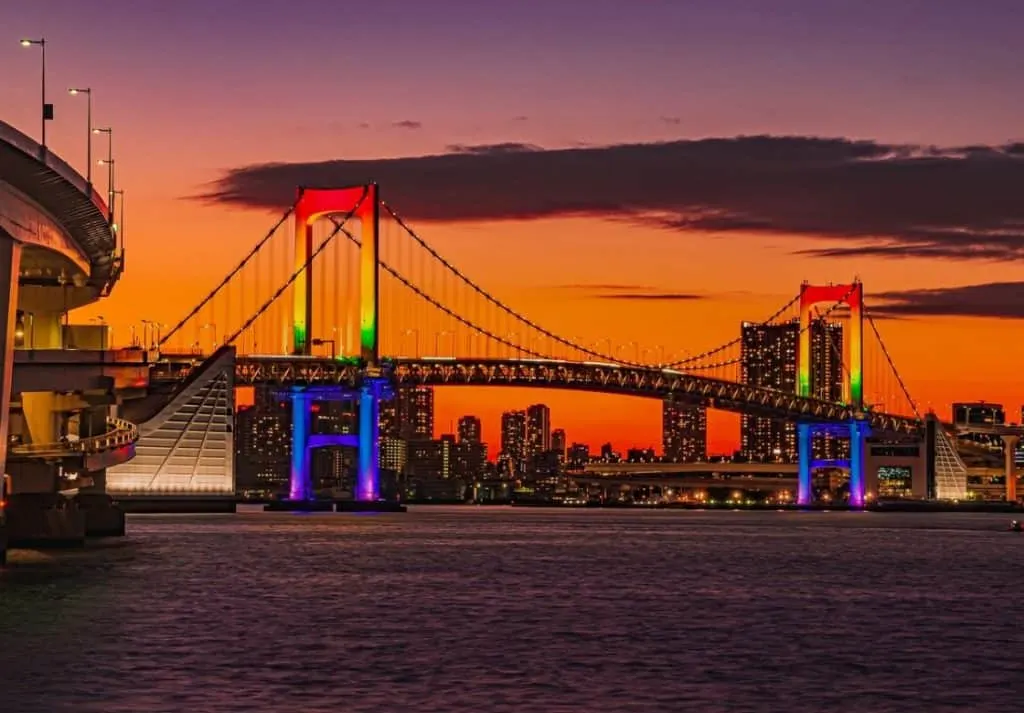
6. Nakagin Capsule Tower
The Nakagin Capsule Tower is one of the most peculiar buildings in Tokyo.
It’s one of the most prominent examples of a post-war architectural style that developed in the city referred to as “Japanese Metabolism.”
It was the world’s first building consisting of capsules that were built for permanent use and it was completed in just 30 days in 1972.
Even though the building still stands today and is being used as well, its condition has seriously deteriorated over the past few decades.
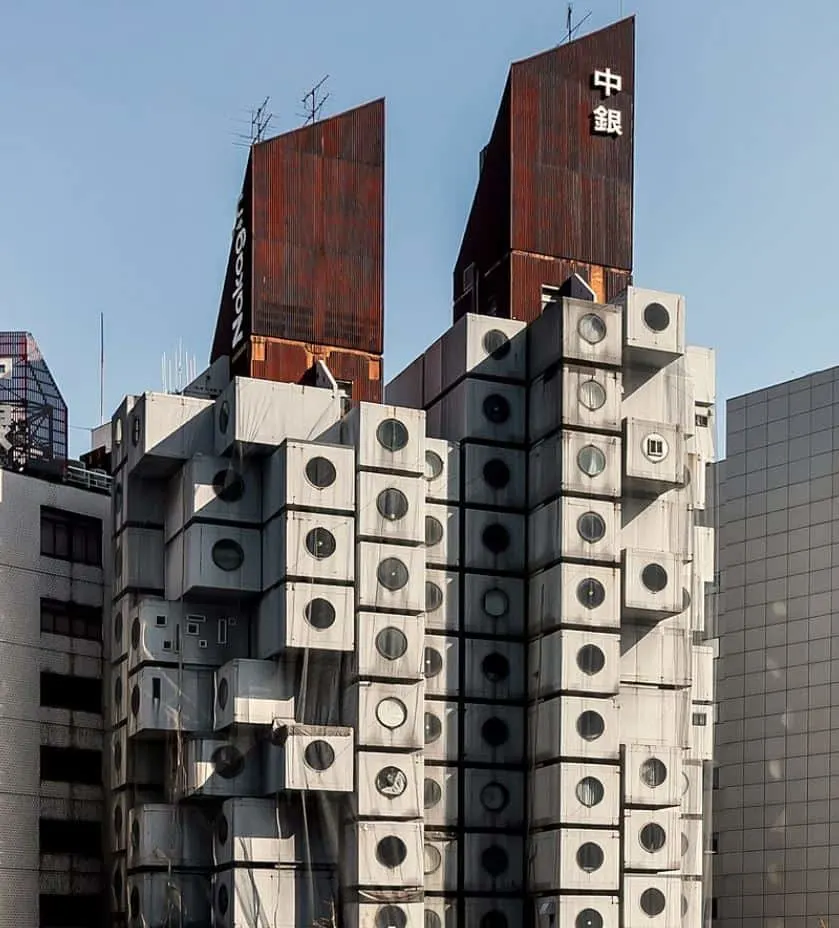
7. Tokyo Metropolitan Government Building
The Tokyo Metropolitan Government Building, locally known as “Tochō,” is the home of the headquarters of the government agencies that run the entire Tokyo Metropolis.
The amazing skyscraper was designed in such a way that it was supposed to resemble a modern version of Gothic Cathedral.
The tower features 2 observation decks located at a height of 202 meters (663 feet) which provide some of the best views of central Tokyo.
Official website: Tokyo Metropolitan Government Building

8. Akasaka Palace
The Akasaka Palace is one of the most astounding palaces in the world and serves its purpose as the State Guest House of the Government of Japan.
It’s one of two such buildings with the other being the Kyoto State Guest House.
This palace didn’t always serve this purpose, though, because it was originally built as the Imperial Palace for the Crown Prince in 1909.
It has been the State Guest House since 1974 and has been designated as a National Treasure of Japan.
Official website: Akasaka Palace
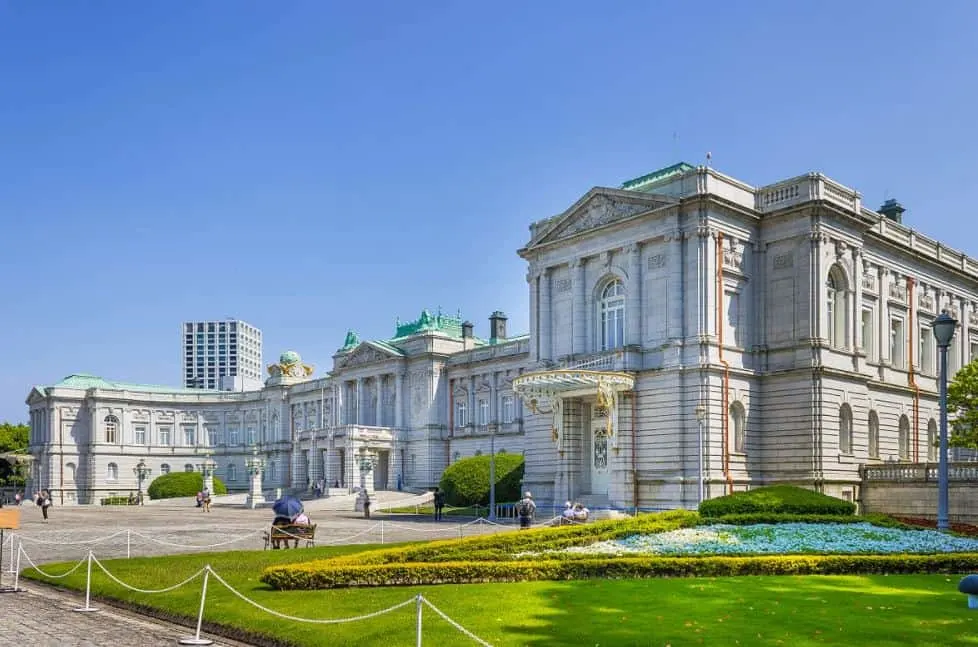
9. Mode Gakuen Cocoon Tower
The Mode Gakuen Cocoon Tower is one of the most fascinating buildings in Tokyo and its design somewhat resembles the iconic Gherkin in London.
This makes it all the most intriguing that it serves its purpose as an educational building, housing 3 different education facilities.
The tower was completed in 2008 and has 50 floors. It stands 204 meters (669 feet) tall which means that it’s the second-tallest educational building in the world!
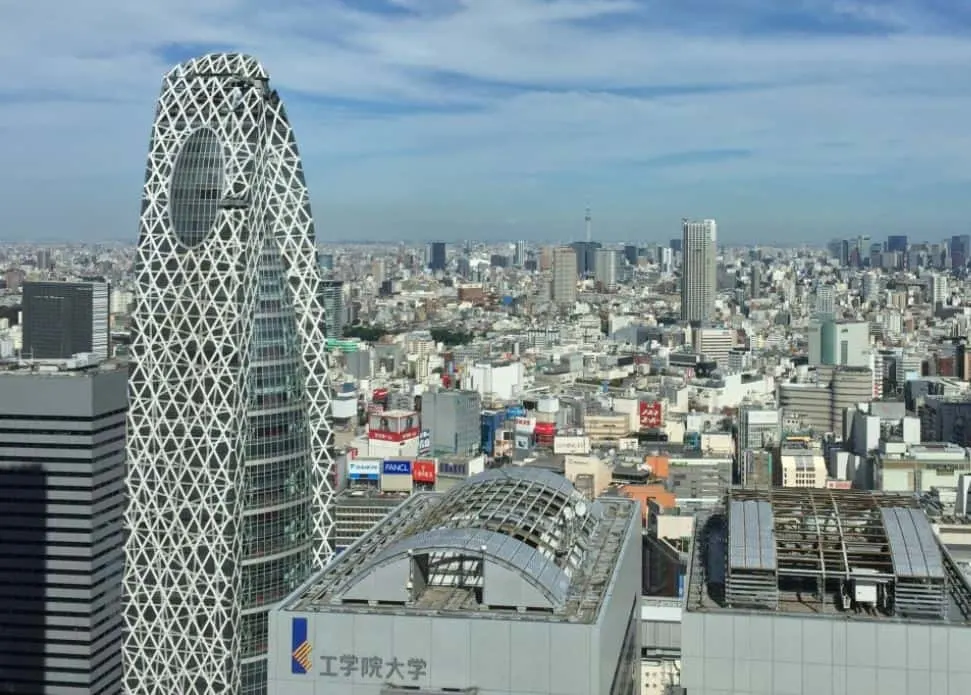
10. Tokyo Station
Tokyo Station is an enormous railway station that is located in Chiyoda in Central Tokyo.
It’s situated just east of the Imperial Palace grounds and the newly added Eastern section borders the famous Ginza commercial district.
The station opened its doors in 1914 and got connected to the Tokyo Metro in 1958.
It has since become the busiest station in Japan with over 4,000 trains arriving and departing here and over half a million people using it every day as well.
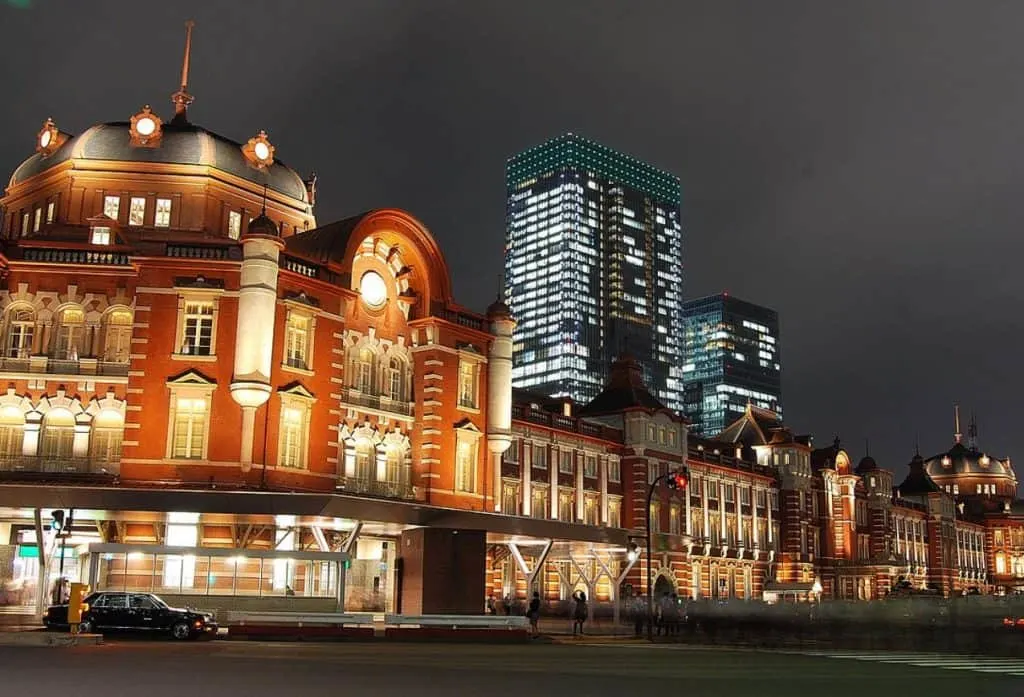
11. Tokyo National Museum
The Tokyo National Museum is the oldest national museum in Japan and the biggest one as well.
It’s also one of the largest art museums in the world with a collection of over 110,000 items and over 2 million yearly visitors.
89 items of this incredibly huge collection are National Treasures of Japan as well.
It’s situated in the enormous Ueno Park in Taitō City, which is just north of central Tokyo.
Official website: Tokyo National Museum
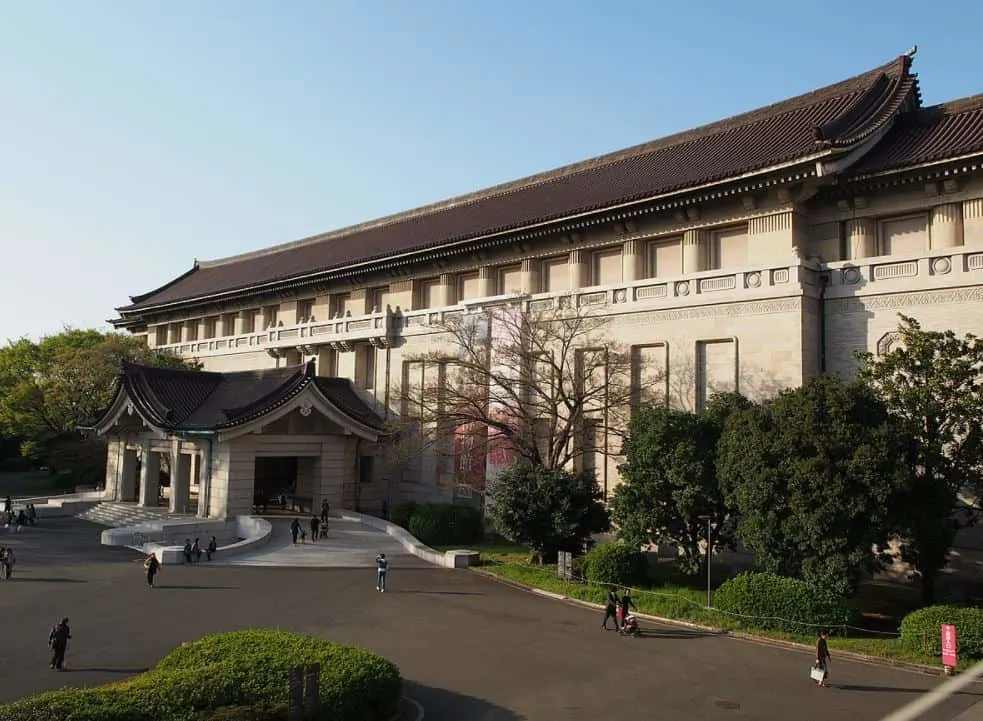
12. Takeshita Street
Takeshita Street is one of the most famous and busiest shopping streets in Tokyo.
It’s a pedestrian with a length of about 400 meters (1312 feet) and it’s lined with a large number of shops that sell a wide variety of merchandise.
The shops in the streets are used by the biggest brands as a so-called bellwether, a method of measuring upcoming trends.
This means that this is a place that you can buy something trendy here before it becomes a fad!
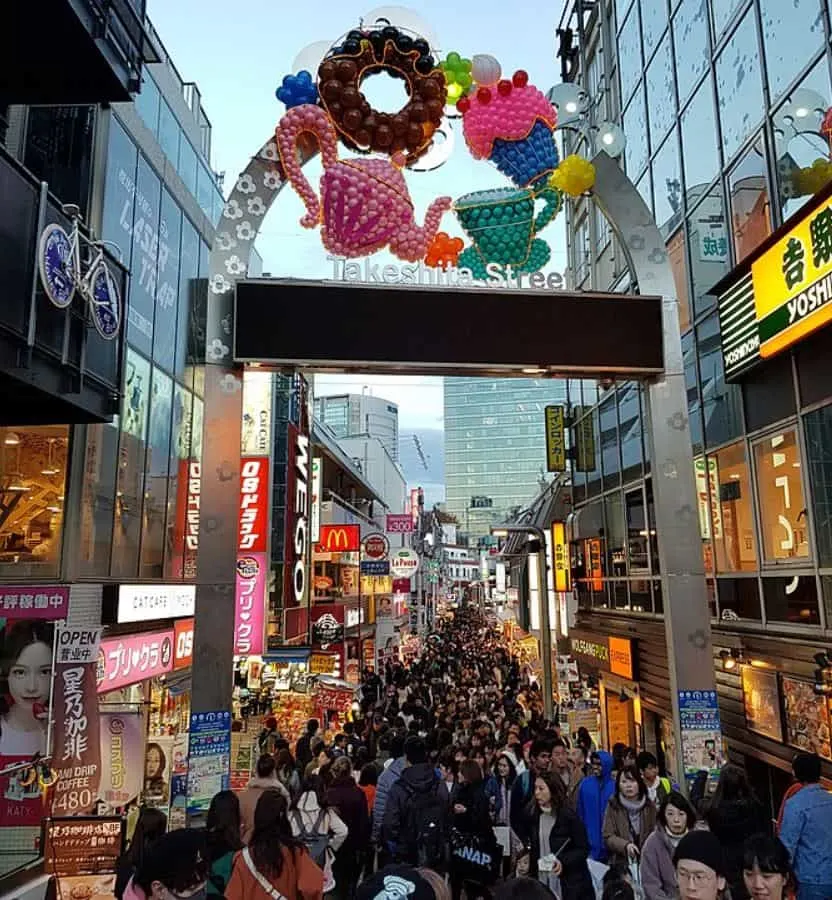
13. Zojoji Temple
The Zojoji Temple is the main temple of Jōdo-shū Buddhism in the Kantō region, which encompasses all of the Greater Tokyo Area.
The temple was prominent during the Edo Period (1603-1867) as several members of the Tokugawa clan are buried in the temple’s mausoleum complex.
The main gate of the temple dates back to the year 1622 and is the oldest wooden structure in Tokyo today. The Tokyo Tower is located just next to it as well.
Official website: Zojoji Temple

14. Shibuya Crossing
The Shibuya Crossing is arguably one of the most famous crossings in the world.
It’s referred to as a “scramble crossing” because it features multiple crossings which pretty much turn it into a square, even though it’s technically an intersection.
It has often been compared to Times Square in New York due to its advertising lights.
This location has also frequently been used in movies including blockbusters such as Lost in Translation, The Fast and the Furious: Tokyo Drift, and Resident Evil: Afterlife.
Official website: Shibuya Scramble Square
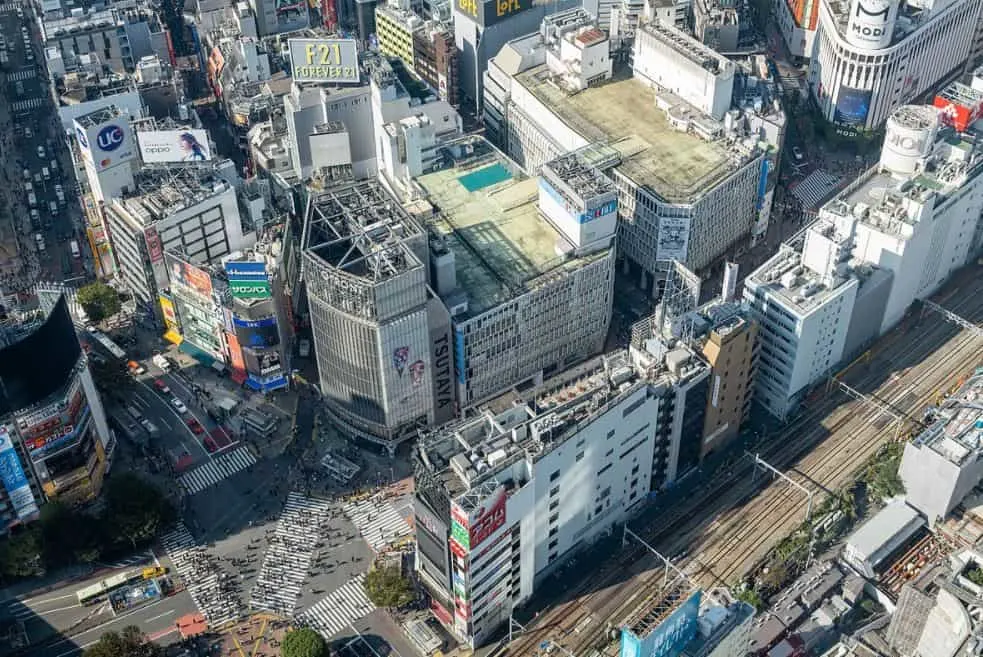
15. NTT Docomo Yoyogi Building
The NTT Docomo Yoyogi Building is a famous skyscraper in Tokyo that kind of resembles the Empire State Building in New York City.
It stands 240 meters (790 feet) tall which makes it the 4th-tallest building in Tokyo.
One of the tower’s most fascinating features is the clock which was installed in the year 2002.
This turned this building into the second-tallest clocktower in the world behind the Abraj Al-Bait Tower in Mecca (601 meters / 1,972 feet).
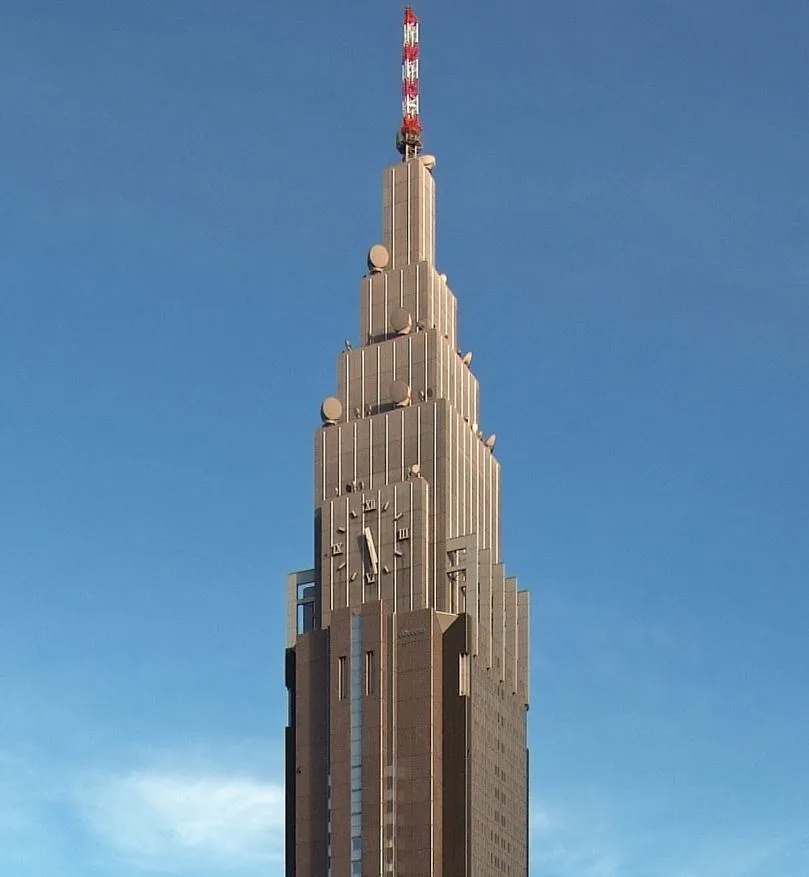
16. Sekiguchi Catholic Church
Tokyo isn’t just home to some of the most amazing Buddhist temples in the world, there’s also a remarkable church called the St. Mary’s Cathedral.
This church has become one of the most fascinating landmarks in Tokyo after it was renovated in the year 2007.
It now serves its purpose as the seat of the Roman Catholic Archdiocese of Tokyo.
The present church was originally built in 1964 and replaced an original wooden Gothic church that was destroyed during World War II.
Official website: Sekiguchi Catholic Church

17. Tokyo International Forum
The Tokyo International Forum is a multi-purpose exhibition center located in the Yūrakuchō business district in central Tokyo.
This fascinating structure was built on the site of the Old City Hall of the city before it was moved to the Tokyo Metropolitan Government Building.
The building, which has the shape of an elongated boat, was designed by Uruguayan architect Rafael Viñoly and completed between 1996 and 1997.
Official website: Tokyo International Forum

18. Yoyogi National Gymnasium
The Yoyogi National Gymnasium is another remarkable building located in the Yoyogi Park in Shibuya in central Tokyo.
It’s a sports complex which features 2 arenas, one with a capacity of 13,291 and the other with a capacity of 3,202 spectators.
The building was completed between 1963 and 1964 and was one of the venues of the 1964 Summer Olympics for swimming and diving events.
Today it’s still used for a wide variety of sporting events and was scheduled to be used during the 2020 Summer Olympics as well.
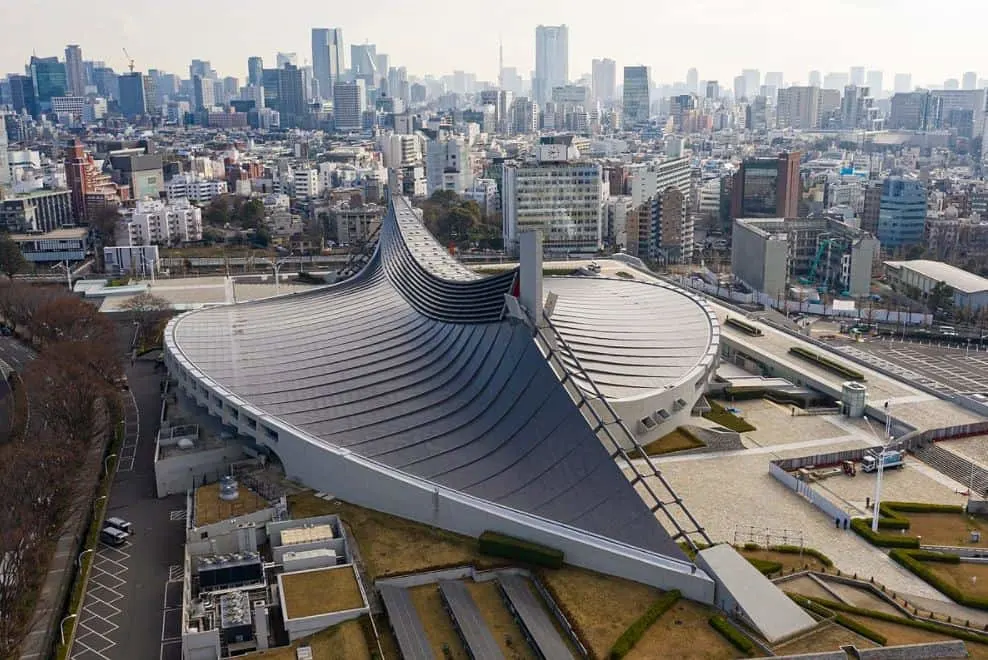
19. Tokyo Big Sight
Tokyo Big Sight is another fascinating exhibition center that is officially known as the “Tokyo International Exhibition Center.“
It’s located in the Ariake Minami district which is part of the Tokyo Waterfront City.
The building was opened in 1996 and features a very distinctive conference tower.
It’s another building that was originally scheduled to be used during the 2020 Summer Olympics for the wrestling, fencing, and taekwondo events.
Official website: Tokyo Big Sight
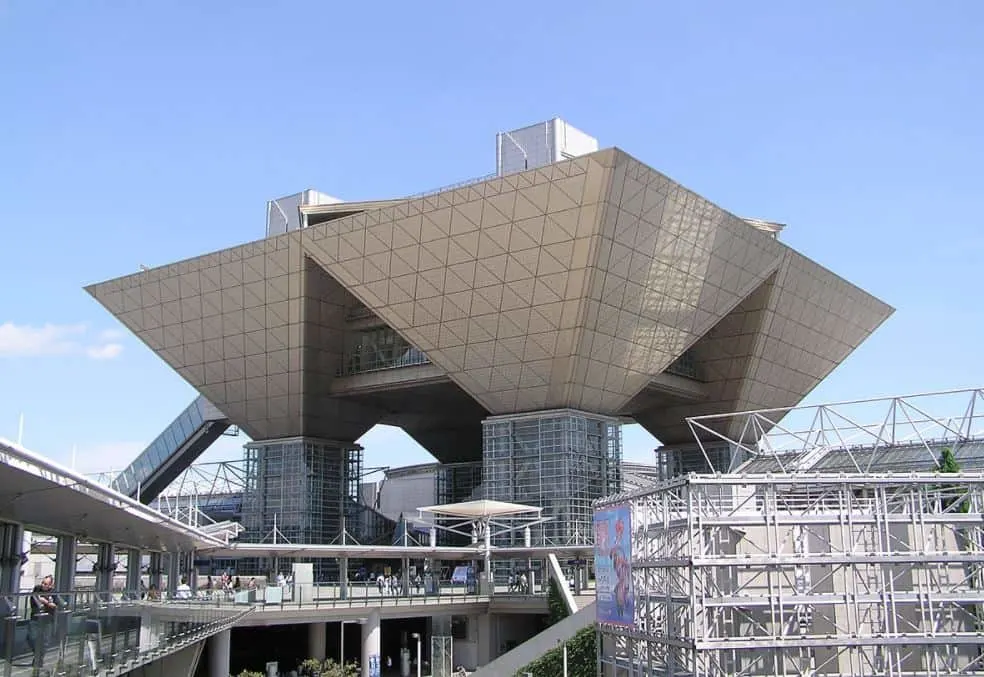
20. National Diet Building
The National Diet Building is the official meeting place of the National Diet of Japan.
It’s located in the Nagatachō district of the Chiyoda ward in the city and was constructed between 1920 and 1936 following an architectural competition.
It’s one of the most fascinating buildings in Tokyo due to its remarkable architectural design, something that makes it a must-see attraction in Tokyo.
The main feature of the structure is a remarkable central tower that reaches a height of 65.45 meters (214.73 feet).
Official website: National Diet Building
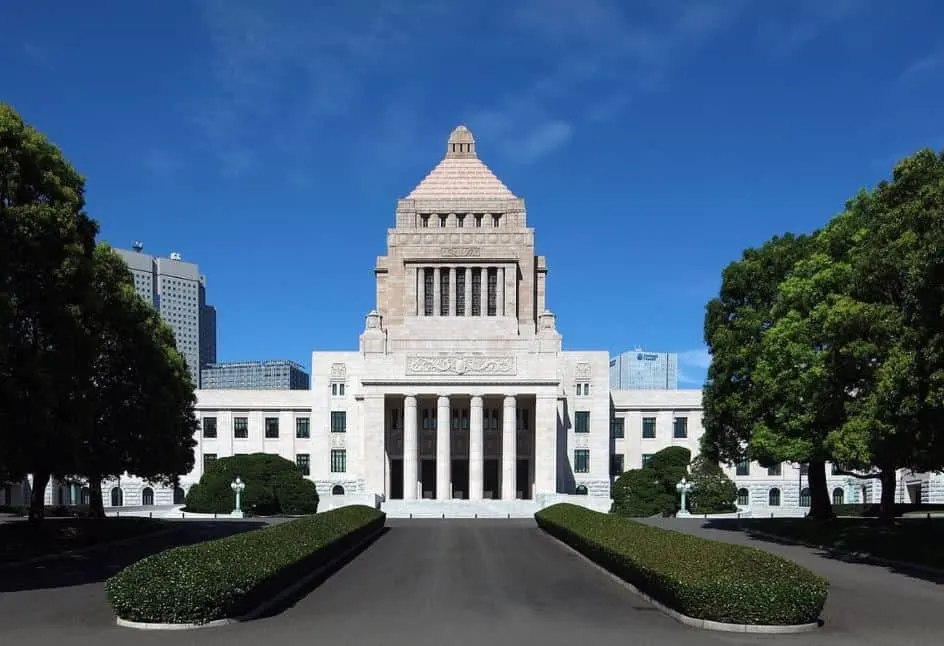
21. Meiji Shrine
The Meiji Shrine is a Shinto shrine in the Shibuya ward of Tokyo and is believed to house the deified spirits of both Emperor Meiji and his wife, Empress Shōken.
Emperor Meiji reigned between 1867 and 1912 and was the first monarch of the Empire of Japan.
Even though his spirit resides in this shrine, his remains aren’t located here. These can be found at Fushimi-momoyama, just south of the city of Kyoto.
Official website: Meiji Jingu

22. Opera City
Opera City is a complex that features both a skyscraper and a theater, as well as concert halls, an art gallery, a media-art museum, and various restaurants and shops.
It’s located in the Shinjuku Ward in central Tokyo and is one of the main attractions in the area.
The skyscraper is adjoined by the New National Theater which features an opera house with a capacity of 1,814 spectators.
Official website: Tokyo Opera City Concert Hall
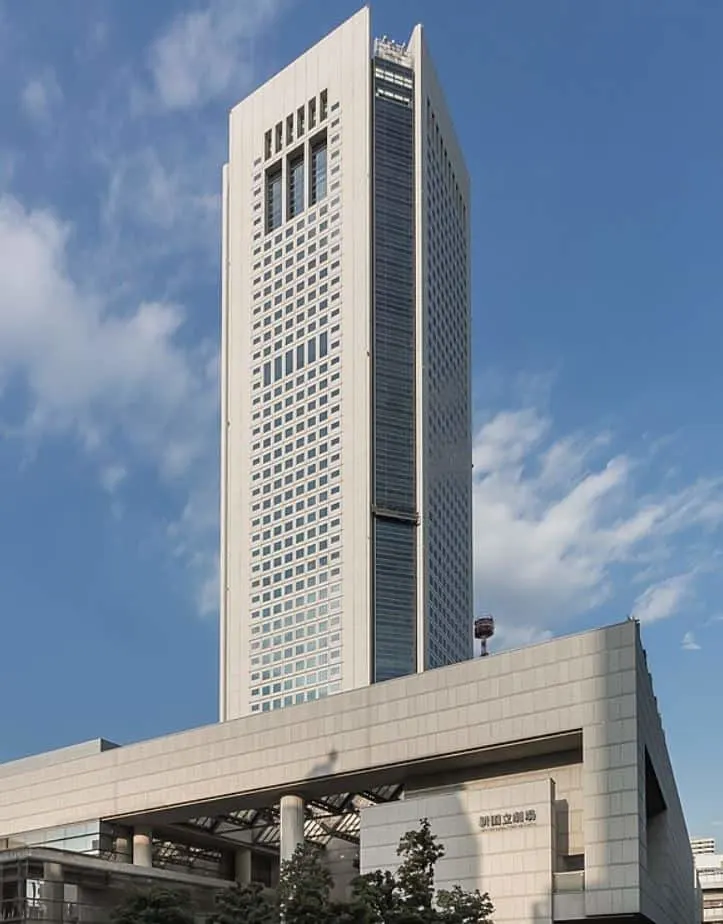
23. Daikanransha
Daikanransha is a Ferris wheel and one of the main attractions of Palette Town, an entertainment complex in Odaiba, a large artificial island in Tokyo Bay.
The wheel stands 115 meters (377 feet) tall and was officially the tallest Ferris wheel in the world upon completion in the year 1999.
It held this record until it was overtaken by the London Eye which stands 135 meters (443 feet) tall.
Most of the famous buildings in Tokyo are visible from the top of this fascinating attraction.

24. Japan National Stadium
The Japan National Stadium was originally known as the “New National Stadium” but now just referred to as the “National Stadium” is an amazing new sports temple in the center of Tokyo.
It’s located in Shinjuku and was built to serve as the main venue of the 2020 Summer Olympics.
It’s a multi-purpose stadium with a capacity of 68,000 spectators and it was completed on November 30, 2019.
Even though it’s far from being the biggest stadium in the world, it’s renowned for its extremely modern facilities.
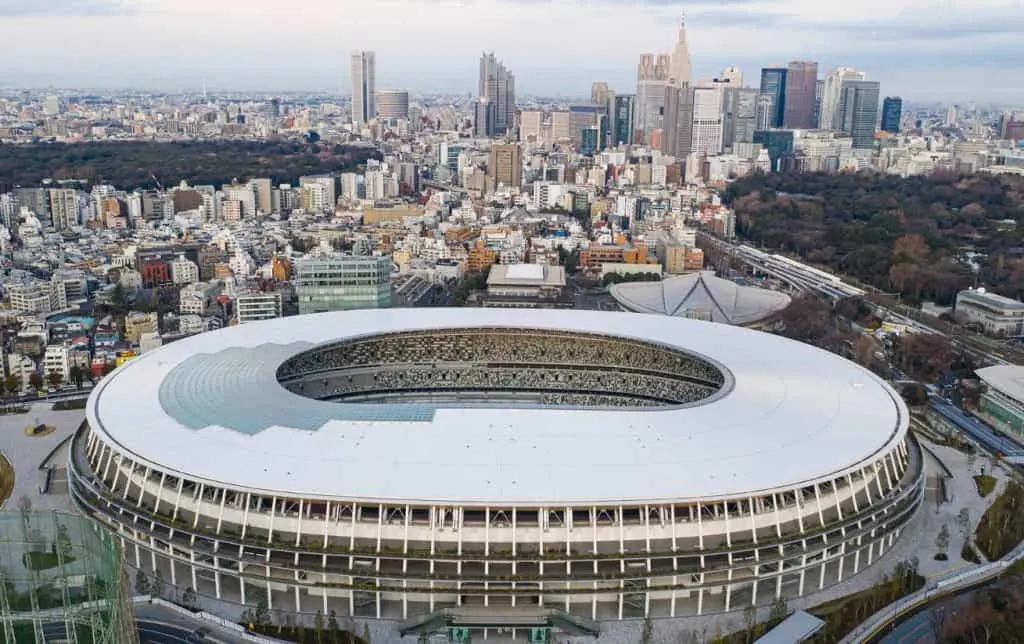
25. Asahi Beer Hall
What better way to relax after visiting all these amazing buildings in Tokyo than with a cold beer?
Well, you won’t find many beers at the Asahi Beer Hall, though, because this building serves as the headquarters of the Asahi Brewery.
It’s located on the east bank of the Sumida River in Sumida City and has become one of the best-recognized landmarks in the city.
That’s mainly due to its remarkable modern design and the famous golden “Asahi Flame” on top of it.

